We might be a little biased since we do call Bordeaux home, but we think it’s one of the best places to visit in France. There’s no where else in France like it. You can combine a vibrant city, beautiful vineyards making some of the world’s most famous wine, a charming medieval UNESCO listed village with the world’s largest church of its kind, and some of the most stunning beaches in all of Europe all for the perfect Bordeaux trip. We’ve lived here for nearly four years and still haven’t seen and done it all. But with limited travel time, a long weekend in Bordeaux can be just the right amount of time to fall in love with the World Capital of Wine. Follow our 3-day Bordeaux itinerary (or stretch it to 4 days in Bordeaux to include a day visiting Europe’s largest sand dune) to ensure you experience all the best Bordeaux has to offer.
And if you need more suggestions beyond this Bordeaux itinerary, join our Bordeaux travel Facebook group to ask us questions, get even more Bordeaux travel tips and our latest recommendations.
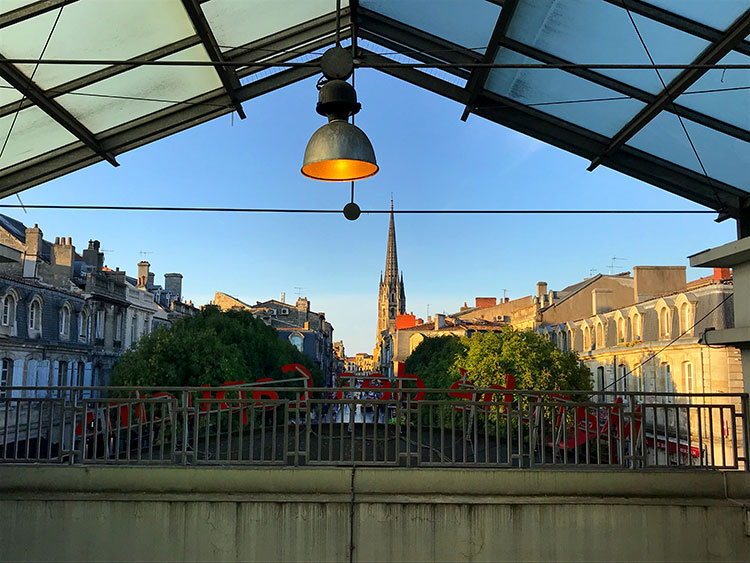
Day 1: Exploring Bordeaux City Centre on a Walking Tour
Until more recent years, the city of Bordeaux was a stopping over point you blazed through on your way to the world class vineyards. Dubbed the nickname Sleeping Beauty because of the grime years being a bustling port left behind, even the Bordelaise didn’t spend much time in Bordeaux city center. There just wasn’t much to do or reason to hang around the center. But a massive revitalization project over the last decade or so gave Bordeaux a much needed facelift. All those years of grime were quite literally washed away. New attractions like the gardens along the quay, the Miroir d’Eau and museums began to lure in visitors and locals alike.
These days Bordeaux regularly ranks as one of the best cities to live in, both in France and Europe. And there’s loads of attractions and events that can entertain visitors for far longer than just a day. With the vineyards calling and the gorgeous beaches near Bordeaux, you definitely have to divvy up your time among it all, and at least one of your three days in Bordeaux should be devoted to discovering this culturally rich city.
A Bordeaux walking tour is the perfect way to see the city. Unlike Paris, which is a sprawling city with the sights quite spread out, Bordeaux is very compact and walkable.
You don’t need to book a tour, either. Follow our do-it-yourself Bordeaux walking tour and take your time exploring the city. We highly suggest you consider purchasing a Bordeaux City Pass, which gives you free access to a number of museums and monuments that we suggest visiting, entry to La Cité du Vin prior to 12pm and unlimited use of Bordeaux’s public transportation network during the duration of your city pass.
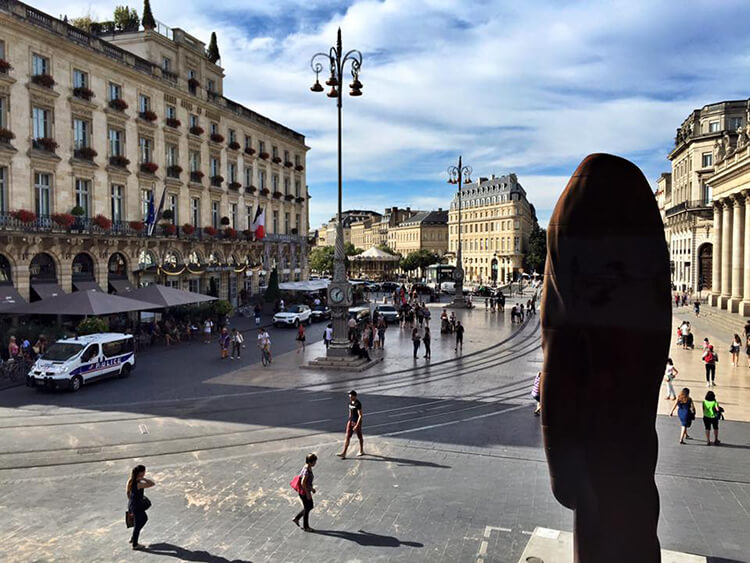
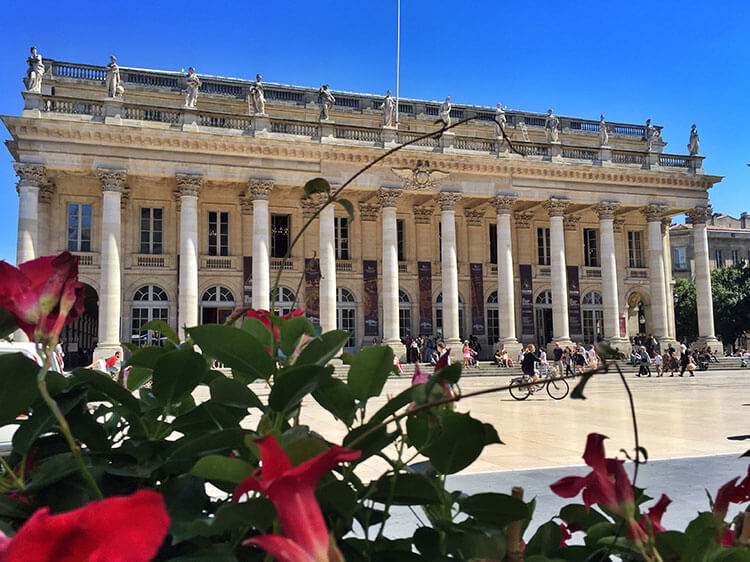
No matter where you’re staying in Bordeaux, Place de la Comedie is situated as though you dropped a pin right in the middle of the city. It’s a great place to start a walking tour with the commanding neoclassical Grand Théâtre holding court, which was inaugurated in 1780 and is one of the oldest wooden frame opera houses in Europe. Take time time admire the portico with 12 Corinthian style columns that perfectly frames the Monument aux Girondins on Place des Quinconces. Look up and you’ll see nine muses and three goddesses of ancient mythology seemingly standing watch over the opera house and Place de la Comedie.
If you’re visiting on a Wednesday or Saturday (outside of the summer months), you can also tour the Grand Théâtre with a look at the interior and a behind the scenes look at the operations. Reservations are mandatory and check the website for tour availability times.
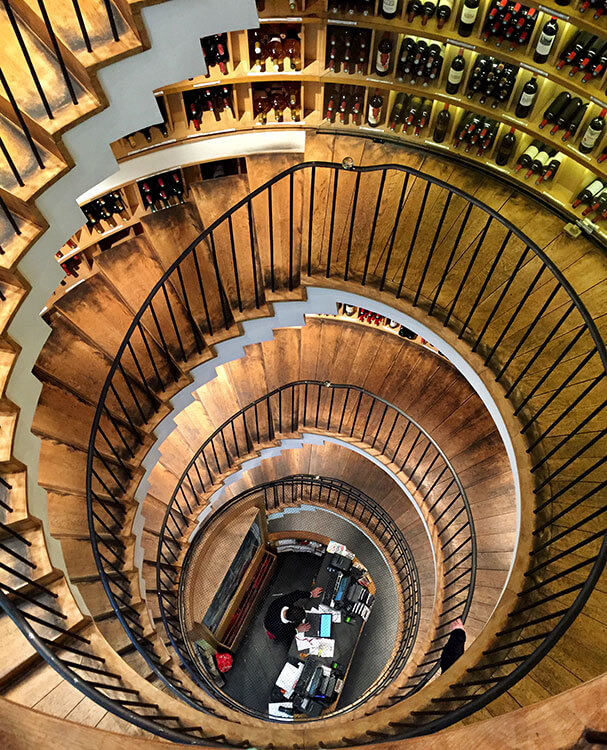
Before leaving Place de la Comedie, pop in to have a look at Bordeaux’s most beautiful wine shop. L’Intendant features only wine from the Bordeaux wine region and you can find wines from 1200 different châteaux. The spiral staircase is lined with the bottles and organized by appellation. Head to the very top floor to find some of the world’s most famous and most expensive wines. One can dream, right?
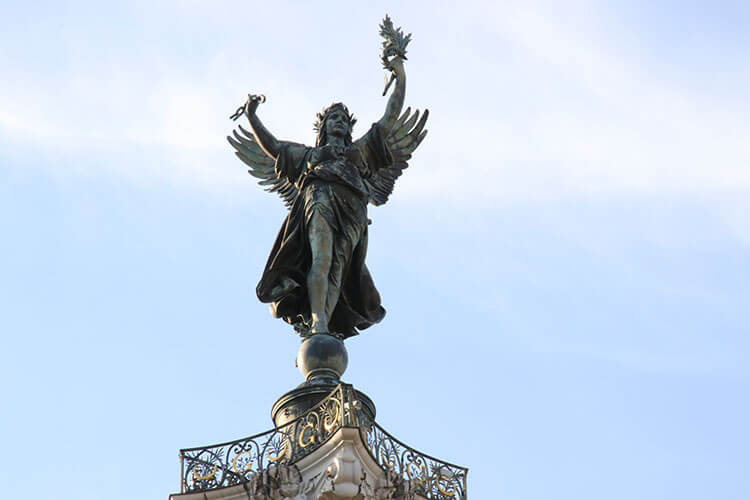
Head to Place des Quinconces and the Monument aux Girondins. The monument is emblematic of the French revolution and is one of the classified historical monuments of Bordeaux. It’s a 43 meter high column topped with a 20-meter high Statue of Liberty breaking from from her chains, and the base is surrounded by groupings of bronze sculptures.
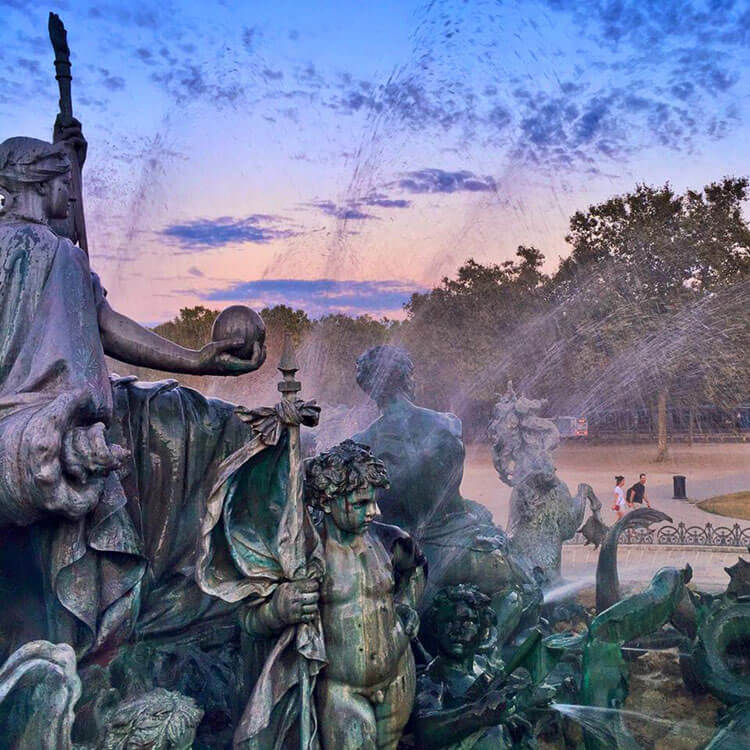
If you’re looking at the horses and a chariot located in the direction of the Grand Théâtre, this sculpture represents the triumph of the Republic of France. Look for the seahorses, which represent happiness. Continuing around toward Allées de Tourny, you’ll find the city of Bordeaux sitting on the bow of a ship and an allegory of our two important rivers: the Garonne and the Dordogne. Circling toward the Chartrons district, the sculpture represents the triumph of Concorde. And finally facing the river is the Tribune with the Gallic rooster, with the rooster being a symbol of France.
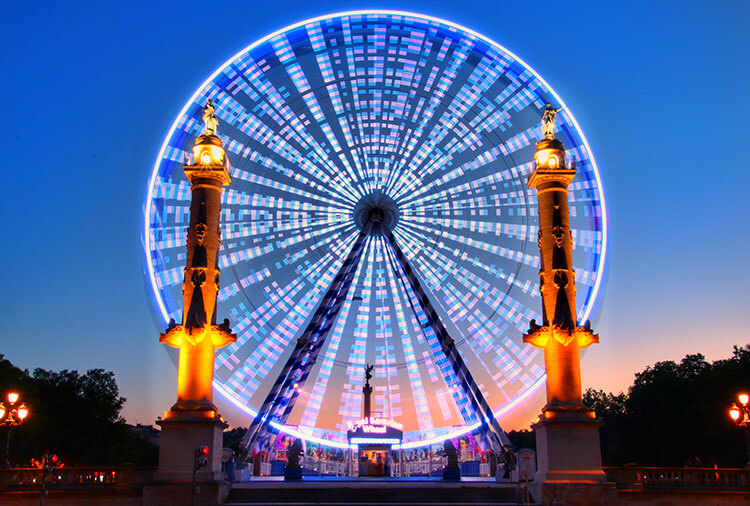
The Monument aux Girondins sits on Place des Quinconces, which is the largest square in Europe. Depending on when you’re visiting, you might either find a large open space or one of the many festivals, carnivals or events that take place in Bordeaux throughout the year.
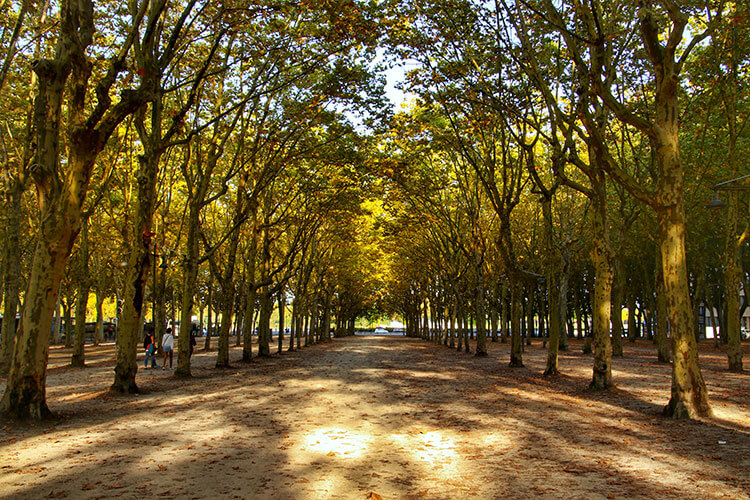
Walk beneath the plane trees toward the river. The way the plane trees are planted in the staggered rows gives the name to the square. At the river entrance to the square, there are two monumental columns topped with more statues dedicated to Bordeaux’s maritime and commercial port history.
Also note that Place des Quinconces is the major transportation hub of Bordeaux, with all of the tram lines converging here and a number of bus lines terminating here. Because of that, there’s always a steady stream of visitors and lends to making Place des Quinconces one of the most photographed spots in the city.
Cross the street and walk through the gardens of the Quai toward the Miroir d’Eau and Place de la Bourse.
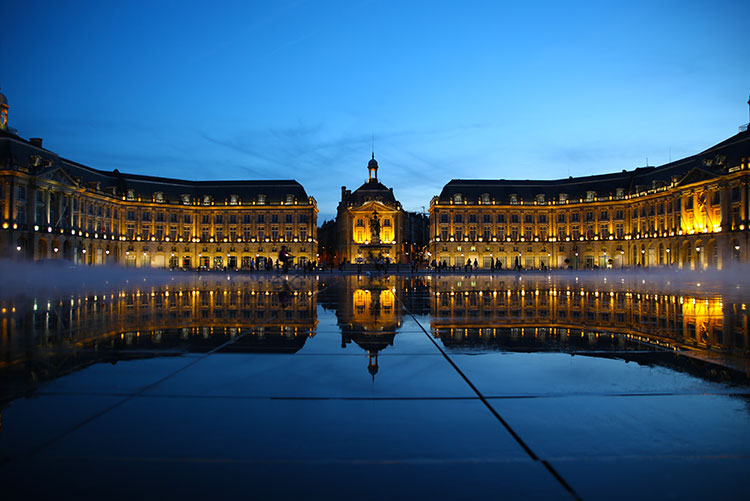
The 3,450 square meter Miroir d’Eau is the world’s largest reflecting pool and was designed as a work of art when it opened in 2006. It’s a Bordeaux must see. Kids, adults, tourists and locals alike love splashing in the water, especially on a hot summer day. The water features cycles through a program consistently from 10am – 10pm daily with 3 minutes of filled water, 5 minutes of emptying, 15 minutes of mirror effect and 3 minutes of fog.
The spectacular Place de la Bourse, which is reflected on the Miroir d’Eau during the mirror effect, is the very symbol of the city of Bordeaux. The 18th century classical buildings also played a major role in Bordeaux’s future, opening up the previously fortified medieval city walls. It took 20 years to construct and consists of three separate buildings: the Hôtel des Fermes, the Hôtel de la Bourse and the central pavilion.
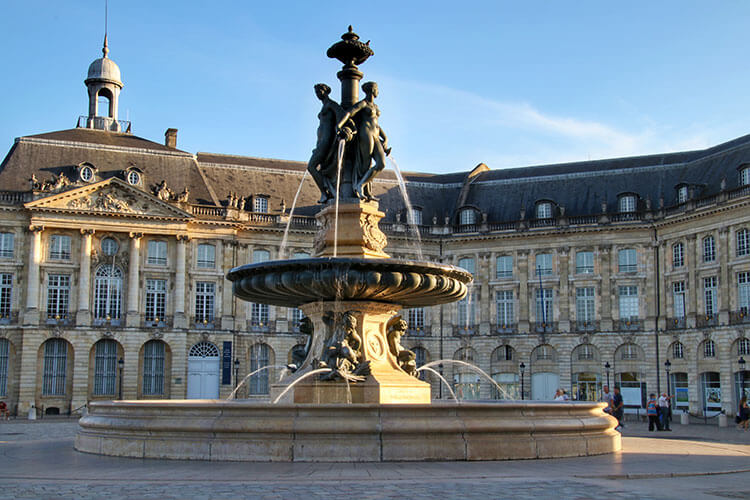
The Fountain of the Three Graces was added to the square in 1869. Formerly statues of Napoleon, and even before that an equestrian statue, had stood in center of the square.
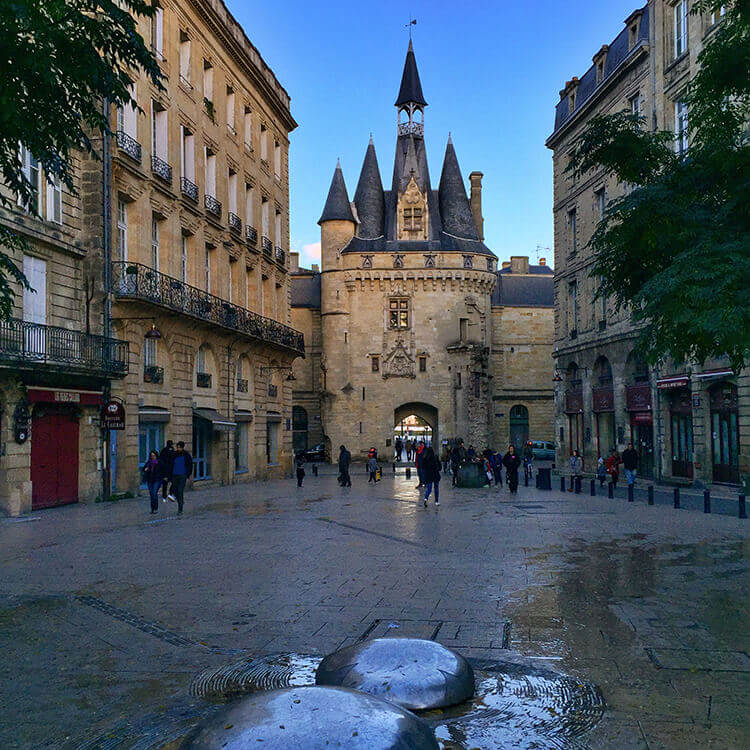
Port Cailhau was once the main gate to the city of Bordeaux. It remains almost unchanged from when it built and integrated in to Bordeaux’s fortifications in 1494. Look for a statue of Charles VIII on the river side of Port Cailhau, whom the triumphal arch and gate was built for to commemorate his victory at Fornovo, Italy.
It’s more than just a monument that is castle-like though. You can actually go upside of the gate, where there’s a small museum that shows how Bordeaux was built from the limestone quarries. It’s an interesting little museum that is included for free entry with the Bordeaux City Pass, but we also like the view on to the quay and river from the perch 35 meters above the city.
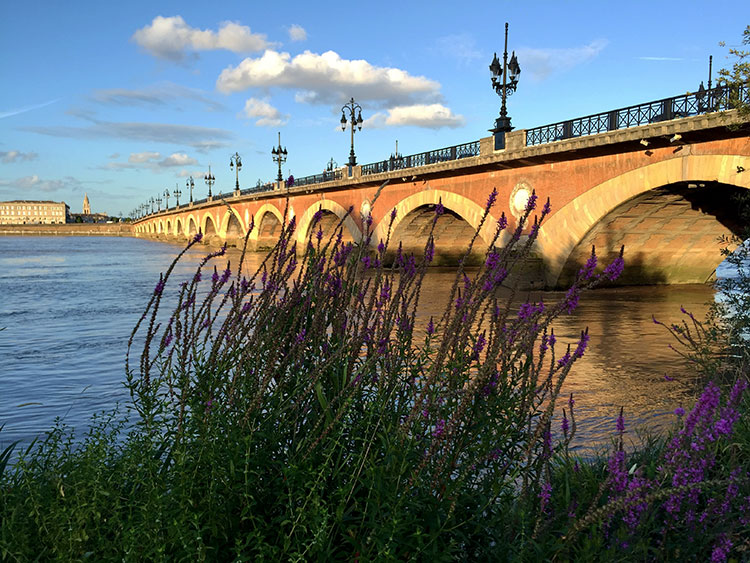
Pont du Pierre, or the Stone Bridge, was the first bridge built over the Garonne River in Bordeaux and was Bordeaux’s only bridge until 1965. The construction took place under the orders of Napoleon I. Count the 17 arches of the bridge – it’s no coincidence that there are also 17 letters in the name Napoleon Bonaparte. Since 2017 the bridge became pedestrian-only with the exception of the tram lines that still cross it in order to preserve the bridge.
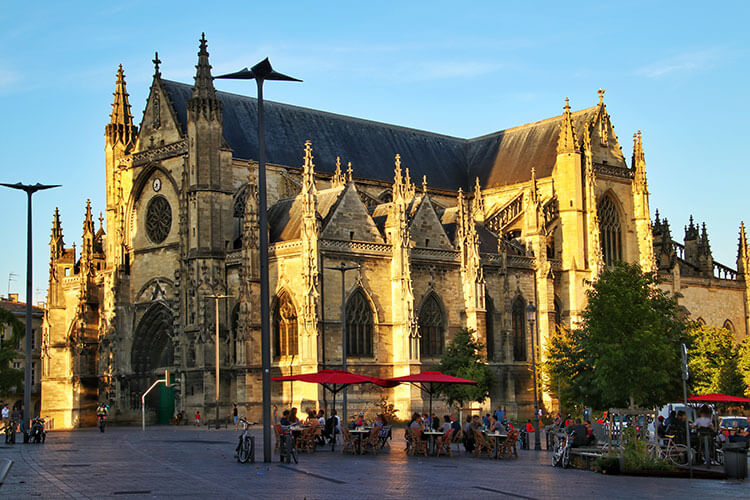
Continue walking along the Quai to head to Saint-Michel, Bordeaux’s ancient quarter. The Basilica of Saint-Michel was built between the 14th and 16th centuries in the Gothic style and is dedicated to the archangel.
It’s open to the public from April to October and worth popping inside of the basilica for a look. At 75 meters long and 38 meters wide, it’s one of the largest places of worship in Bordeaux. There’s 17 side chapels and each is a work of art dedicated to various brotherhoods. The stained glass window with the genealogy of Jesus is the oldest of the stain glass windows in the basilica.
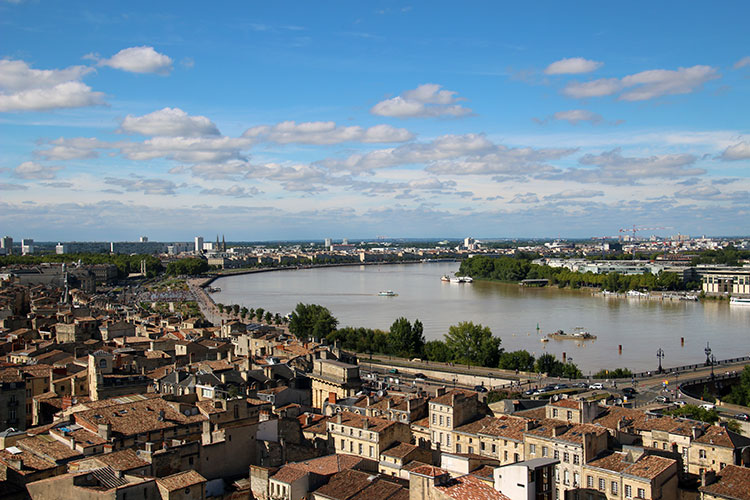
The bell tower was built separately from the church in the 15th century and, at 114 meters high, it’s the second tallest bell tower in France. It’s also the tallest bell tower in southern France. Us locals refer to it simply as La Flèche. You can climb up the bell tower for one of the best bird’s eye views over the city and it’s free to do so with your Bordeaux City Pass.
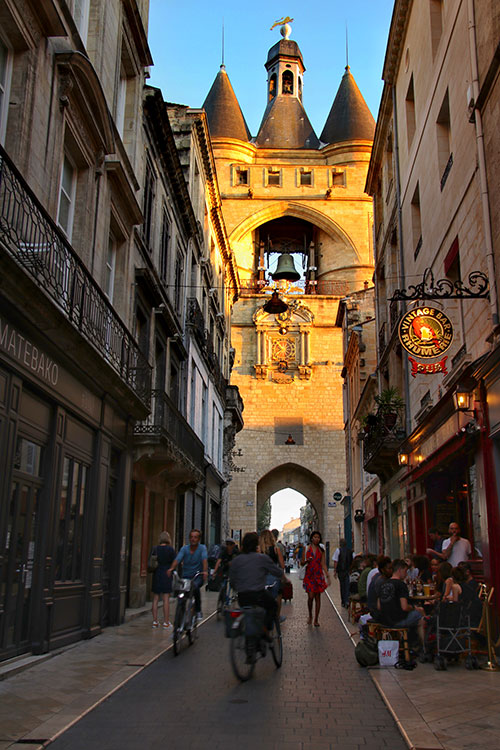
Make your way to the Grosse Cloche, one of the oldest belfries in France. The name literally means “big bell” and the 7800 kilogram bell that still hangs there today was cast in 1775. The bell is so large that when it’s rung, the windows in the neighborhood rattle. These days the bell is only rung a handful of times throughout the year: on the first Sunday of each month, January 1, May 8, July 14 for Bastille Day, August 28th which marks the 1944 liberation of Bordeaux and November 11th.
The belfry itself is built from the remains of the 13th century Porte Saint-Éloi, which was one of the main gates to the commercial center of medieval Bordeaux. It’s also known as the Porte Saint-James since pilgrims on the Saint James’ Way have always passed through this gate.
At one point in time, this gate also served as a prison. You can tour the belfry to have a look at dungeons, which is included in the Bordeaux City Pass.
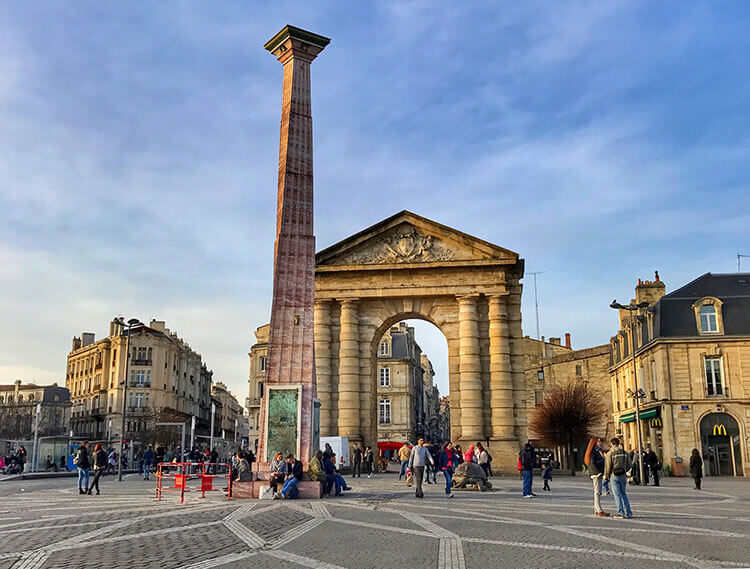
Place de la Victoire wasn’t named as such until 1918, when the name was changed to commemorate the end of WWI. Long before that this big square was a fairgrounds located just outside the fortifications, and a gate stood where the triumphal arch we see today stands. That arch is the Porte d’Aquitaine and it was completed in 1756 after the fortifications and medieval castle were destroyed.
The obelisk and the giant turtle sculptures were added to Place de la Victoire in 2005. The 16 meter tall obelisk is made of red marble from the Languedoc and bronze. And though wine has always been an important part of Bordeaux’s history, this was the first monument in the city dedicated to viticulture and wine. The motifs on the obelisk tell stories of the history of wine from ancient times to the present day.
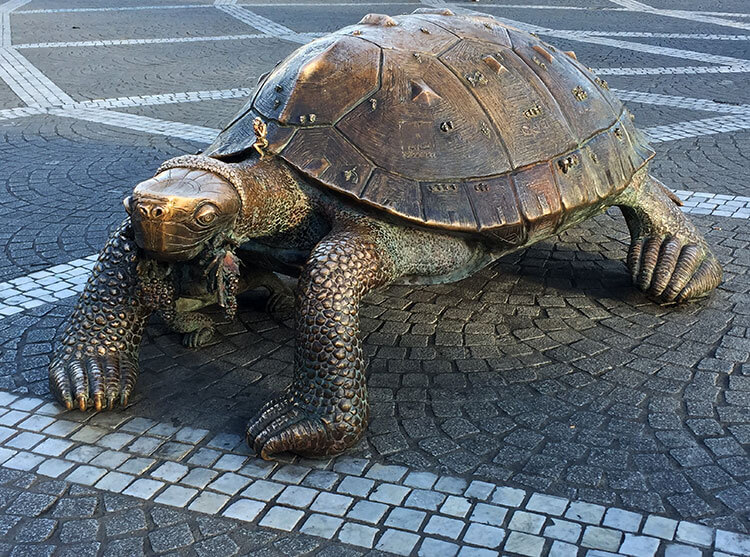
The turtles symbolize the long, steady rise of the wine industry of Bordeaux. Their shells, if you get a look between the kids that love to climb all over the turtles, are adorned with the names of the Bordeaux appellations.
Place de la Victoire is another of the busiest places in Bordeaux and is frequented by many of the local university students. It’s also the start of Rue Saint-Catherine, the most important and longest pedestrian street in Europe. These days Rue Saint-Catherine is occupied by many chain stores, but it’s still worth walking up at least a portion of it before making your way to Cathedral Saint-Andre.
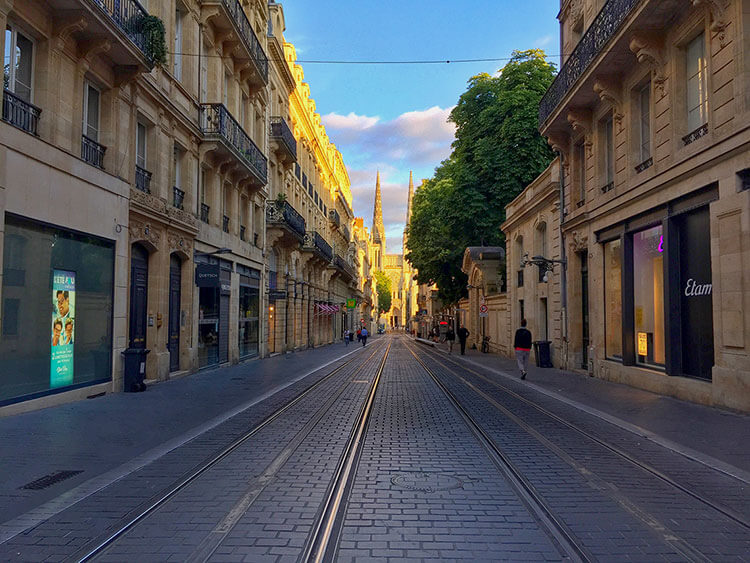
A church has stood on the spot of Cathedral Saint-Andre since 1096, though only a wall from the original Romanesque edifice remains inside the nave. It was in the original church that a 15-year old Elenor of Aquitaine married Louis VII in 1137, just a few months before she became Queen of France.
The cathedral as we see it today was mostly built in the 14th and 15th centuries. The current cathedral was witness to the marriage of Anne of Austria and Louis XIII in 1615.
The cathedral remains the seat of the Archbishop of Bordeaux and is a working cathedral, so the inside is only open to the public briefly on Wednesday and Saturday afternoons.
You can visit the freestanding Tour Pey-Berland next to the cathedral. It was built in 1440 after the 12th century tower of Cathedral Saint-Andre couldn’t support the weight of the bell. The tenor bell is massive at 11 tons, making it the fourth largest bell in France. Climb up the tower’s 229 steps for another spectacular view over Bordeaux.
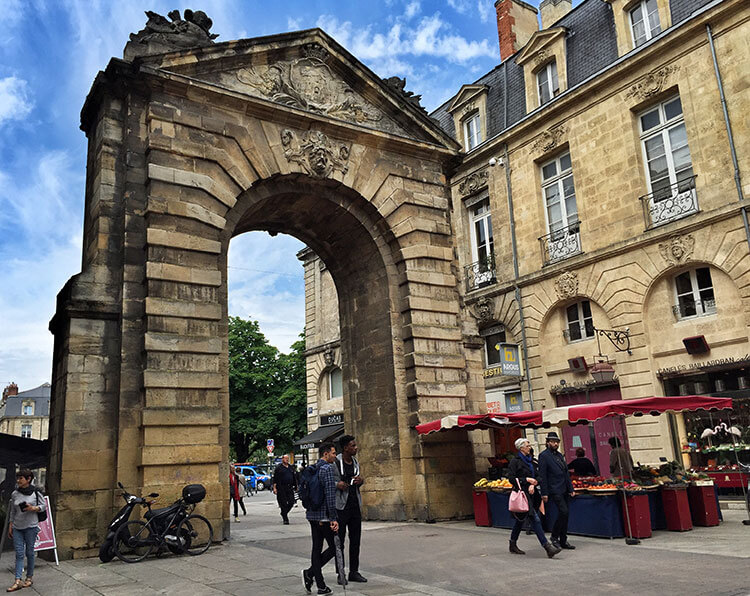
End your do-it-yourself walking tour of Bordeaux at the Port Dijeaux and Place Gambetta. Port Dijeaux was the first line of fortification and the western entrance to the city since the Roman times. The gate has been replaced over the centuries and the current gate we see today was built between 1748 and 1753. Look for Bordeaux’s coat of arms and the face of Neptune, who a friend recently pointed out bears a striking resemblance to the Cowardly Lion in The Wizard of Oz.
Just outside of Port Dijeaux is the small park of Place Gambetta. While today you’ll likely see locals lounging on the grass during their lunch break, it wasn’t always such a serene place in the center of Bordeaux. It was the permanent location of Bordeaux’s guillotine between October 1793 and July 1794 where sordid, torturous acts took place almost daily. Nearly 300 people were sent to the guillotine here.
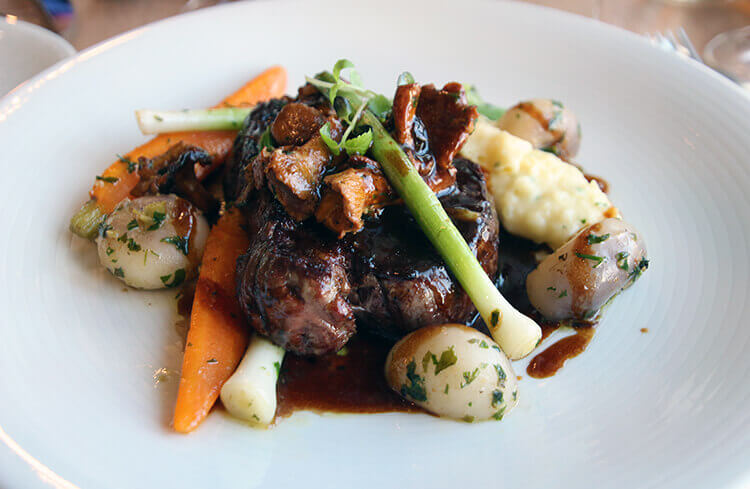
After a day of exploring Bordeaux on foot, indulging at one of Bordeaux’s many restaurants is practically guilt free. We have a lot of favorites throughout the city. Just be sure to book a reservation in advance, which you can easily do online with one of our favorite apps: LaFourchette. It takes the language barrier out of making any restaurant reservations and you can easily book without needing to make expensive phone calls to France before your trip.
For Bordelaise dishes to taste authentic cuisine from the southwest of France head to Bordeaux icons like La Tupina or La Brasserie Bordelaise. For one of the most beautiful views over Bordeaux, we love booking a table about an hour before sunset at Le 7 Restaurant on the seventh floor of La Cité du Vin. Or if you want something a bit more exotic, Madame Pang (note that this restaurant doesn’t take reservations) is one of our favorite picks for the fun atmosphere and the delicious dim sum.
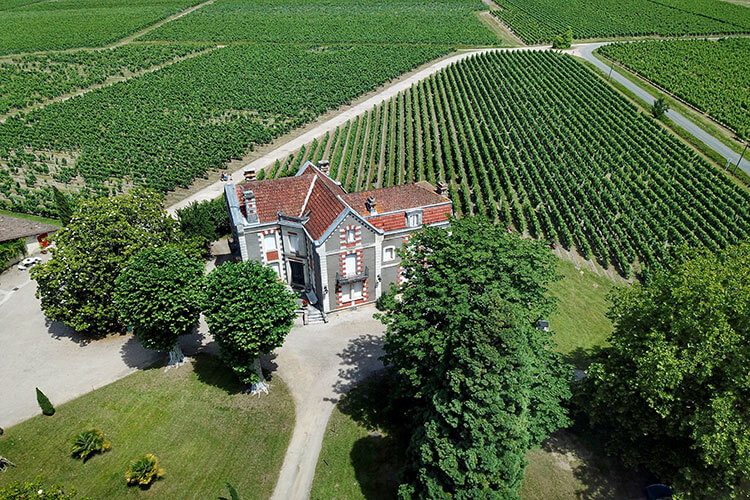
Day 2: Wine Tasting Day Tours from Bordeaux to Margaux, Saint-Émilion or Sauternes
When it comes to the Bordeaux wine region, it’s much larger than many people anticipate. The region encompasses 65 different appellations and more than 7300 châteaux. It’s a huge area that spans both the Left and Right banks of the Garonne River. Just to put things in to perspective, the Médoc alone is an area stretching 60 kilometers (37 miles) in length. People often underestimate the amount of time that it takes to get from one appellation to another, and even from one château to another.
That’s why if you only have one day to visit Bordeaux’s châteaux for wine tasting, it’s best to focus on a single appellation. You should plan for one hour for a classic visit and tasting at a château, which will encompass touring the estate from the vineyard to the cellar and tasting 2-3 of the château’s wines.
To help you plan your day out wine tasting in Bordeaux, we’ve put together these 1-day itineraries for Margaux on the Left Bank, Saint-Émilion on the Right Bank and Sauternes, Bordeaux’s sweet wine appellation. Just click the tabs to see the various itinerary options for these three possible day trips from Bordeaux.
It takes just 35 minutes to reach Margaux by car, and Margaux is also easily accessible from Bordeaux center by taking Tram Line C to Gare de Blanquefort and then taking the TER train to Margaux. All of the Margaux châteaux are located within a couple minutes drive of each other, and the flat terrain makes it a perfect area to bike from château to château. We suggest either renting a car or utilizing the Vcub public bikes, which you can get from the Gare de Blanquefort station and take on the train with you to Margaux.
For a day trip to Margaux, we recommend visiting two châteaux with lunch at a local restaurant in between.
Start the day at Château Kirwan, a third growth 1855 Grand Cru Classé, for their Vintage Tour.
The Vintage Tour is a special tour that includes the classic visit of the vineyard, winery and barrel room. This tour allows you to select from a list of the château’s old vintages in the cellar beginning from 1967. Your special vintage is decanted while you tour the estate and is waiting for you as you reach the locked cellar where the special vintages are stored. Best paired with food, the old vintages are complimented with cheese and ham for the tasting.
After the visit and tasting at Château Kirwan, drive or bicycle the 3 kilometers to Villabordoh for lunch. This restaurant run by a husband and wife team is situated right on the route of the Médoc castles. The welcome is always warm and the menu is a delight of seasonal dishes at very good prices. The wine list is also extensive and you can leisurely enjoy the meal and some wine outdoors in their garden (weather permitting).
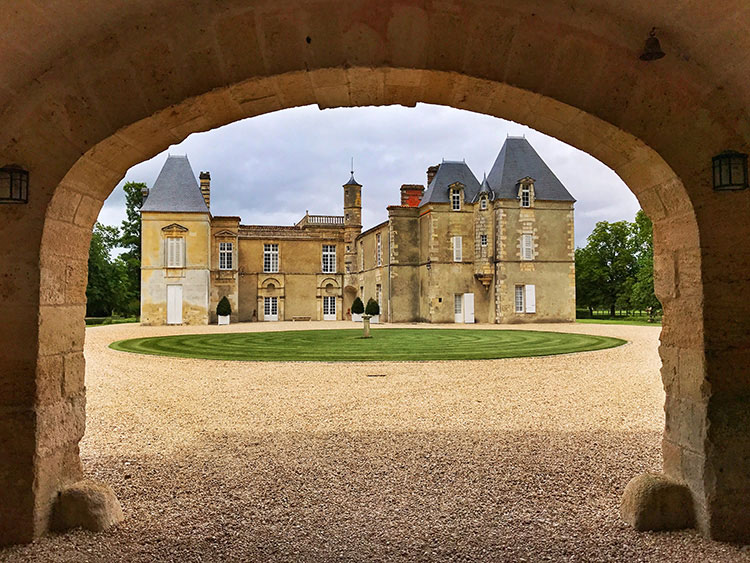
The wines of Château d’Issan were served at the wedding of Eleanor of Aquitaine and Henri Plantagenet on May 18, 1152.
In the afternoon, head to one of the most romantic châteaux in Bordeaux: Château d’Issan. Surrounded by a moat and with the château hidden away behind the defensive outer walls, the estate is simply breathtaking.
The Cruse family, who own Château d’Issan, still live in the house so it’s not possible to see the inside of the château itself. But the tour takes you from the moat on a tour of the grounds as you hear the tales of the estate that stretch back to it’s claim to fame as the Bordeaux wine served at the wedding of Eleanor of Aquitaine to the future king of England, Henri Plantagenet on May 18, 1152. If you’re visiting during the summer months, you’ll be lucky to admire the art exhibition by a solo artist that the château hosts each summer in the historic cellar. The visit ends with a tasting of two wines: a vintage of the 1855 Grand Cru Classé and a vintage of the château’s second wine.
Don’t mistake that to mean that Margaux and Sauternes aren’t stunning, because they are. But in Margaux and Sauternes it’s the wine castles that take center stage. Saint-Émilion is just different as the medieval village is worth a full day of exploring all on its own. Really, you can easily spend 3 days in Saint-Émilion with all there is to do there.
You can easily get from Bordeaux to St. Émilion via train in just 30 minutes, then either rent a tuk-tuk or a bicycle to get around to one of the many nearby châteaux. If you prefer to rent a car, Saint-Émilion is an easy 45-minute drive from Bordeaux and there is various metered parking outside the fortified village. The village itself is best explored on foot or on a tuk-tuk tour, since the old cobbled lanes are steep and uneven.
To combine wine tasting at a châteaux with the highlights of the village of Saint-Émilion, we suggest you follow our Saint-Émilion day trip itinerary that will take you out in to the vines, then inside the fortified village before a tasting of Crémant de Bordeaux that is produced deep below Saint-Émilion in the labyrinth of tunnels that snake beneath the medieval village.
Begin the day with a morning visit and tasting at one of Saint-Émilion’s nearly 1000 châteaux.
If a family-run château with excellent wines and reasonable prices is your aim, then head to the charming Château Cantenac. Their classic visit takes you in to the vineyard, gives you a look at the winemaking processes inside the winery and finishes with a tasting of their selection of wines from both their family’s Saint-Émilion and Médoc wineries.
Or for a unique experience, visit Château Fombrauge where you can blend your very own wine in their B Winemaker workshop. After a classic visit in the vineyard, winery and cellar where vintages dating back to 1870 are stored, you learn the art of blending Cabernet and Merlot wines to find the perfect blend for your palette. You bottle, cork and label your very own unique blend to take home with you before finishing the experience with a tasting of Château Fombrauge’s wines.
We also love the stand-out architecture at Château La Dominique, where you’ll find the theme of red runs throughout the entire château. The modern winery was added on to the historic château and is quite different from anything you’ll see almost in all of the Bordeaux wine region. Château La Dominique is also a fantastic choice for one of the few châteaux that have onsite restaurants and it’s hard to beat their rooftop view over the Saint-Émilion and Pomerol vines radiating out in all directions. The food at the aptly named La Terrasse Rouge is excellent and the 3-course menu available at both lunch and dinner is good value, which is why we recommend the restaurant among the best restaurants in Saint-Émilion .
Back in the UNESCO village, begin your visit by climbing the bell tower of the Monolithic Church. You retrieve the key with your ticket from the Saint-Émilion Tourism Office (and while you’re there, book a ticket for the Underground Saint-Émilion tour for after lunch), then climb the 196 steps to the top of the bell tower for a breathtaking view over the village and vineyards beyond. From this vantage point, you can spot all of the spots you’ll want to explore in the village like the various gates to the village, the Cordeliers Cloister and the King’s Keep.
If you didn’t visit Château La Dominique and stay for lunch at La Terrasse Rouge, head to L’Envers du Decor. It’s located just steps away from the Saint-Émilion Tourism Office and the Monolithic Church, and has been a fixture of the medieval village for more than 30 years. Owned by the same family that owns Château Pavie, the restaurant offers a menu of local cuisine that changes seasonally as the chef only uses the freshest seasonal ingredients. Splurge on a dessert course, especially if they have the soufflé and don’t worry about the calories because you definitely walk every single one off in Saint-Émilion.
There’s more to the Monolithic Church than meets the eye. The bell tower and church we see on the balcony of Saint-Émilion hide a secret beneath them. Begin the afternoon by heading underground to discover the massive 12th century church several stories beneath the surface. It’s the largest church of its kind in Europe and shouldn’t be missed.
Don’t worry if going underground sounds a bit daunting. Even my mom, who is often claustrophobic, loved the underground visit. The church is a massive single vault that will quite literally make your jaw drop.
The tour finishes in the Lower Tower, but head back up to the the Upper Town via the Porte de La Cadène. This is the most lovely of the gates to the fortified town because of the way the vines dangle down it like a curtain and the way the arched gate perfectly frames the bell tower of the Monolithic Church. Though the steep angle of the cobbled lane and the view are what immediately catch your eye, don’t miss the Maison Cadène. This house dates from the 16th century and it’s the only timbered building in the entire village.
Wind your way through the Upper Town to Les Cordeliers, the partially ruined cloister where Crémant de Bordeaux has been produced since 1892.
The cloister itself dates from the 14th century when Franciscan monks were permitted by the Pope to construct it within the walls of Saint-Émilion. They occupied the cloister for four centuries, before abandoning it during the French Revolution in 1789 when the Cordeliers order was banned. It sat with the ivy taking over nearly every inch of the crumbling walls until the 19th century, when it was purchased and the owner had the foresight to utilize the 3 kilometers of underground tunnels to age sparkling wines in the Champagne method.
Like the maze of tunnels beneath the Avenue of Champagne in Épernay, the tunnels beneath the Cordeliers Cloister are perfect for fermenting and aging sparkling wine with their constant darkness and steady 12°C temperature. You can tour the tunnels on either a walking underground tour or a tuk-tuk underground tour, both of which take you 17 meters beneath the surface for a look at the production of the Crémant de Bordeaux.
Both tours end with a tasting of the Cordeliers Crémant de Bordeaux. Or if you’re not interested in going underground to the tunnels, you can always stop by for a glass of Crémant to be enjoyed in the gardens of the Cordeliers Cloister.
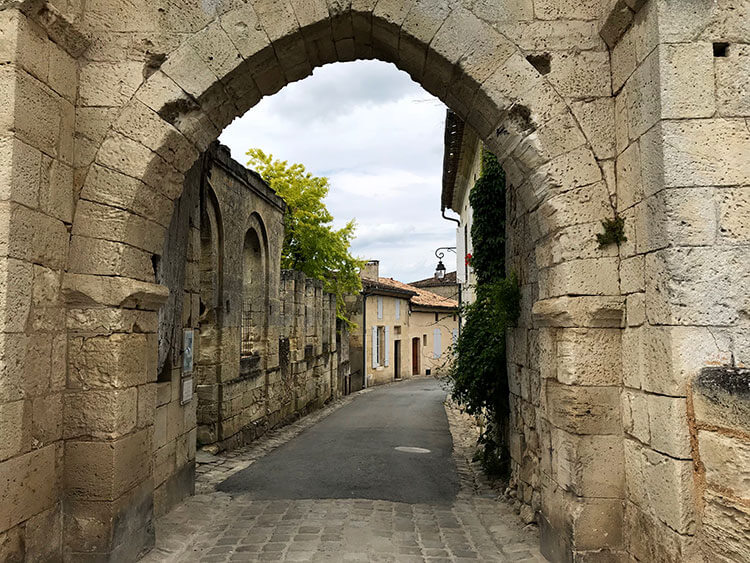
Most visitors don’t find their way to the Porte Brunet in a quiet residential part of of Saint-Émilion
Before leaving Saint-Émilion, stroll from the cloister along the Upper Town toward the Porte Brunet. It’s another of the gates to the fortified village. Not as many tourists make their way to this part of Saint-Émilion and they’re definitely missing out as this is our friend and local Saint-Émilion resident, Aurélie’s favorite viewpoint. Often a few of Saint-Émilion’s resident sheep are grazing just outside the walls.

The Jurade climbs the Tour du Roy every September to declare the official start of the grape harvest in Saint-Émilion
From the Porte Brunet, it’s just a 3-minute walk to La Tour du Roy (or the King’s Keep). It’s worth climbing the 118 steps to the top where every year the Jurade pronounce the start of the harvest in September.
Finish off the visit in Saint-Émilion by either going down again to the Lower Town, which takes you past the Petite Fontaine where the villagers came to do their laundry washing. Or continue along the roads of the Upper Town, which leads you past another beautiful viewpoint over the village as you circle back to the Eglise Collégiale (Catholic Church).
Sauternes is made up of five small villages all situated quite close to one another. It’s easy to visit two or even three Sauternes châteaux on a day trip from Bordeaux.
We recommend starting the day with a visit to Château de Rayne-Vigneau. This 1855 Premier Cru Classé Sauternes château is leading the transformation when it comes to wine tourism in Bordeaux with some of the most unique and adventurous ways to taste wine throughout the entire Bordeaux wine region. For the truly adventurous, try their treetop tasting in which the traditional visit concludes with a return to carefree childhood days climbing trees. With a little assistance and safety equipment, climb up their historic tree for a perch with a view of the family castle-like house while you try the sweet pineapples and honest of a Château de Rayne-Vigneau vintage.
Or if climbing a tree isn’t quite what you had in mind for a fun day out wine tasting, there’s opportunity to go on a horseback ride through the Sauternes vineyards or test your detective skills in solving an Escape Room game as you race against the clock. Of course, if you’re really just in to learn about the appellation and taste some wine, the classic visit is available too.
Adventurous wine tasting works up an appetite and La Chapelle situated on the grounds of the beautiful Château Guiraud is an excellent restaurant to sit back and relax over a delicious meal. There actually are only a handful of châteaux with on-site restaurants across the entire Bordeaux wine region, and La Chapelle is the very first restaurant on a 1855 Premier Cru Classé estate. The restaurant is housed in the former chapel of the estate, which lends the restaurant its name. The menu is renowned for showcasing products from the Nouvelle Aquitaine region, particularly the meats like Bazas beef or the roasted chickens that come from Maison Peyriguet. Try the wine pairings with the menu to taste the wines of Château Guiraud.
Sauternes is something truly special that due to the microclimate created by the convergence of the the Ciron and the Garonne rivers can’t be recreated anywhere else in the world. The sweet wine is the most expensive of any Bordeaux appellation, because of the amount of manual work that needs to be done in order to produce a bottle of Sauternes. It’s the only Bordeaux appellation, not taking in to account exceptional circumstances, that has more than one harvest. That’s because the grapes are left on the vine to become practically raisins as the noble rot, or botrytis, sucks the moisture out and highly concentrates the sugars. Not all the bunches of grapes are ready to be harvested at the same time and botrytis-affected grapes might be harvested in many harvests from early fall through winter. It’s also only possible to harvest entirely by hand.
How a fungus can be a good thing for a grape and produce the exceptional Sauternes wines is difficult to understand without seeing botrytis in action. That’s why Château Coutet Barsac is the perfect place to educate yourself on this unique wine.
Château Coutet Barsac offers a workshop in which you taste each of the grape varietals in jelly form individually. It’s actually pretty rare to taste anything other than the final Bordeaux blends and so often the average wine drinker doesn’t understand what each kind of grape brings to the finished blend. The jellies let you taste what each grape tastes like as an individual. One of the jellies is also the botrytis affected grape and the before and after of what this fungus does to the grape is an almost unbelievable transformation.
Once you have the opportunity to discover the flavor profiles of each grape varietal, the visit ends with a tasting of three Château Coutet Barsac 1855 Premier Cru Classé vintages.
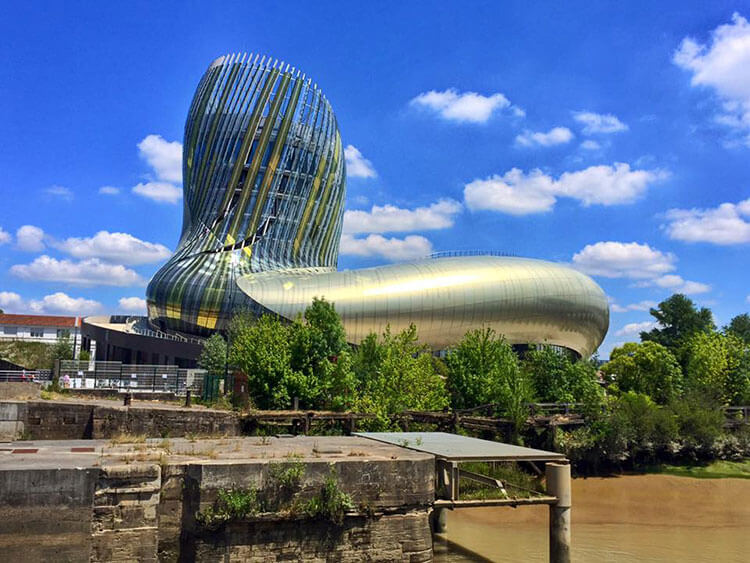
Day 3: La Cité du Vin
If you’re spending a weekend in Bordeaux, Sunday morning is the perfect time to visit La Cité du Vin. Much of the city is closed on Sundays, but La Cité du Vin is open along with a handful of other museums. And if you’ve purchased a Bordeaux City Pass, you get free entry to Bordeaux’s interactive wine museum so long as you enter La Cité du Vin before 12pm.
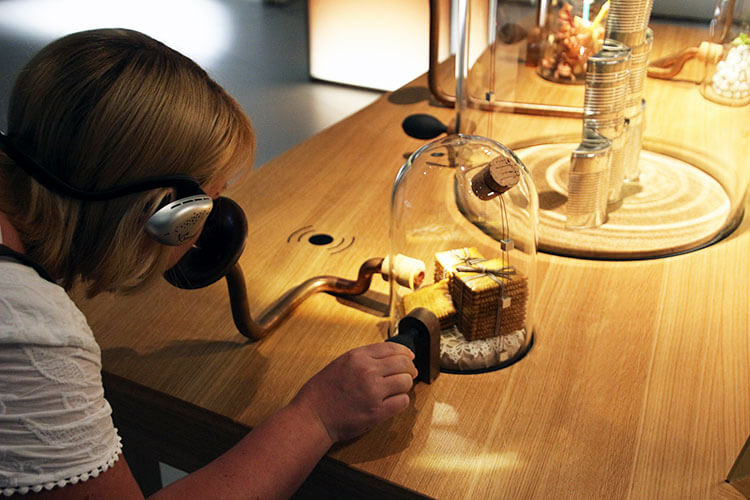
The museum is divided up by the permanent exhibition, which you should allow around 2-3 hours to visit, and by the temporary exhibitions which change every couple of months. The permanent exhibition is about far more than just Bordeaux wine, with a beautiful video of some of the world’s most stunning wine regions. There’s also the history of wine dating back to the Romans. But it’s the interactive exhibits that engage four of your five senses through visuals, sound, touch and smells that are our favorite part. Taste, the fifth sense, is finally engaged at the end of your visit to La Cité du Vin when you’re invited to taste wine from around the world including Bordeaux, Georgia (the country), China and more on the top floor with panoramic views of the city.
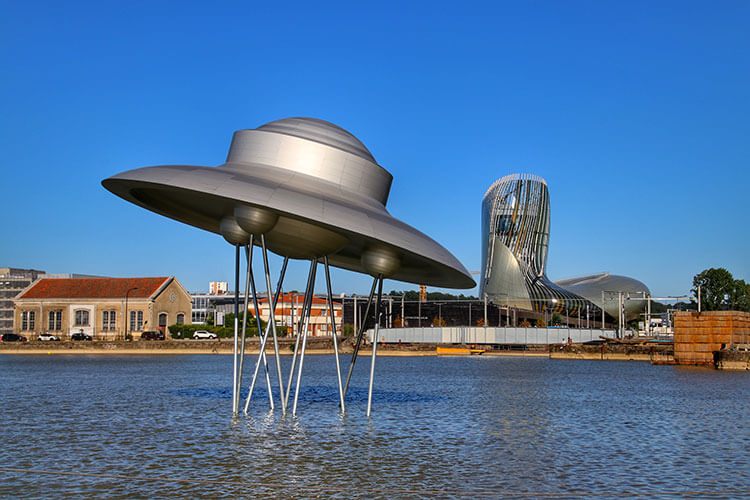
Just a short walk from La Cité du Vin, the Spaceship one of Bordeaux’s newer attractions. It’s an artwork by British artist Suzanne Treister, who was very struck by the sunken WWII ships in the Garonne River. Some protrude from the river at low tide. She had really wanted to haul one of those ships out from their eternal grave and transform it into something else, but the ships are a part of Bordeaux’s history. Instead she came up with this sculpture, representing the past transforming in to the future. It’s been a bit of a controversial addition to Bordeaux, so see it while you can.
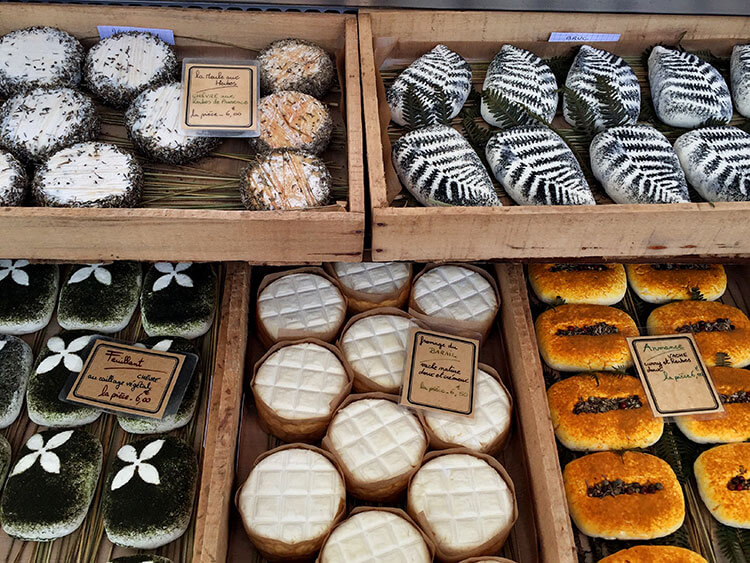
After La Cité du Vin and the Bassin à Flot, stroll along the quay toward the Chartrons district. On Sundays the Marché du Quais, an outdoor market with food producers from the region, sets up along the river. You’ll find some of the most beautiful cheeses. Several producers sell fresh oysters from the Bassin of Arcachon, which you can get a plate of with a glass of white wine and eat at one of the little tables. Or there’s food trucks selling everything from seafood paella to empanadas (we always get some empanadas from the purveyor, who is from French Guiana in South America). Locals buy their produce, meats and fish from the vendors while mixing with tourists that love the ambiance of the lively market scene.
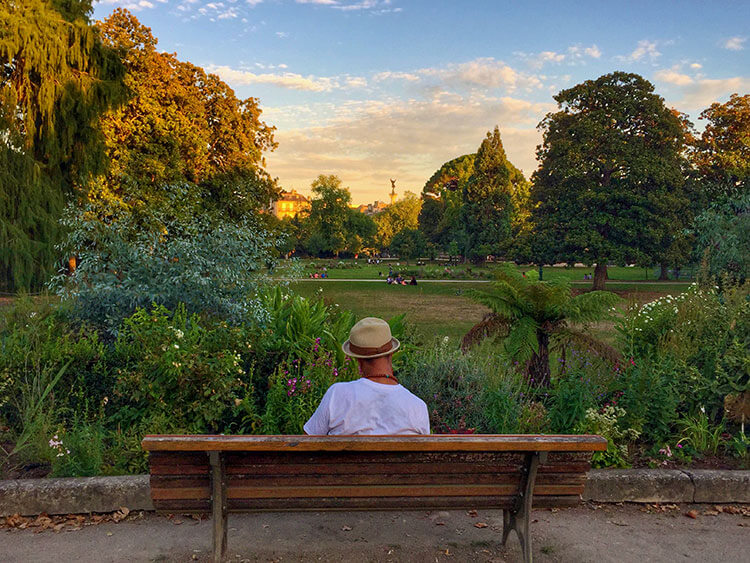
It’s a great place to try several different little plates for lunch, which you can either eat right at the market or take-away to enjoy nearby picnic-style in the gardens of the quays or in the Jardin Public.
Know Before You Go
For a few quick recommendations:
The best city centre hotel is InterContinental Bordeaux Le Grand Hotel.
The best affordable Bordeaux city centre hotel that is very centrally located is Mama Shelter Bordeaux.
The best Saint-Émilion hotel located right in the village is Hostellerie de Plaisance.
This article contains affiliate links. When you book on Booking.com, Trainline or Viator through our affiliate partner sites, we earn a small commission at no additional cost to you.

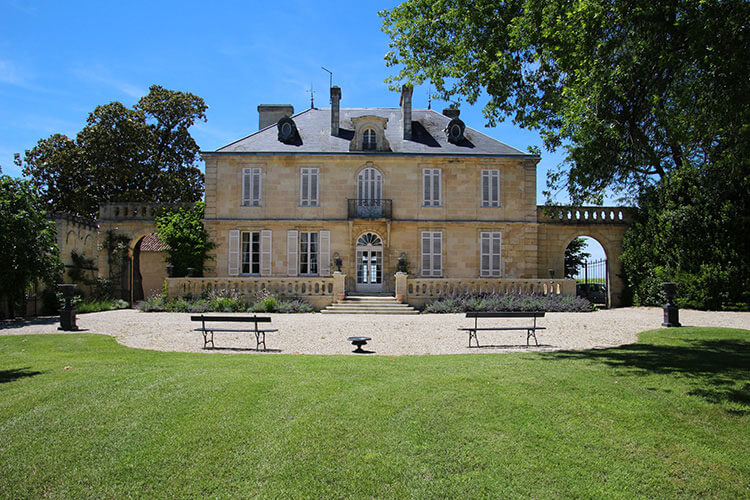
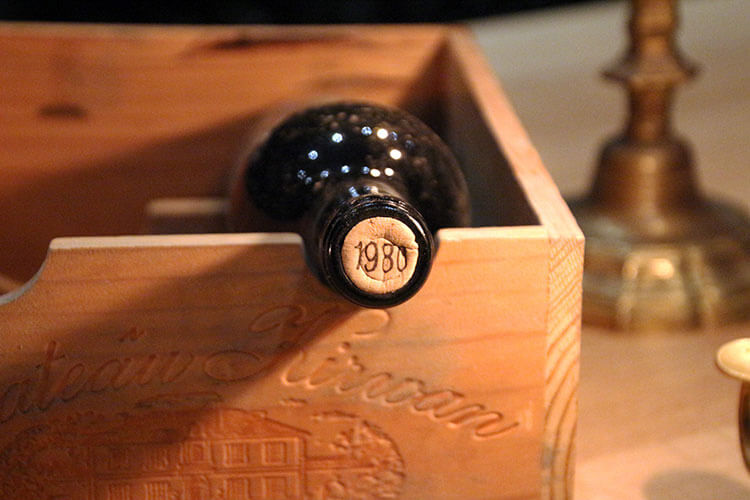
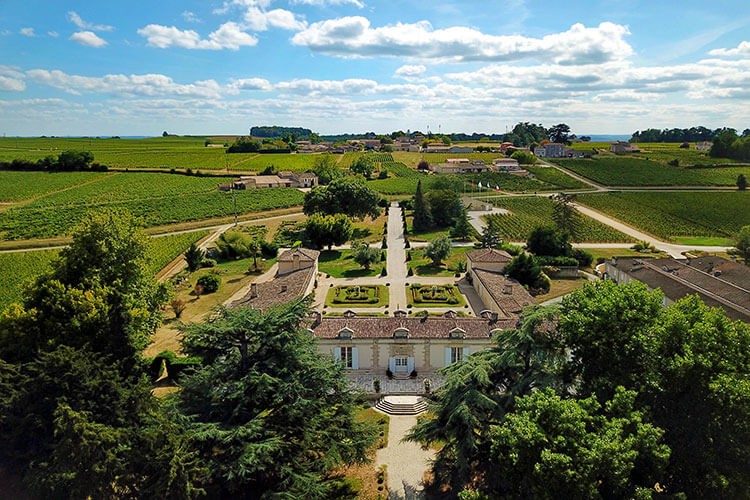
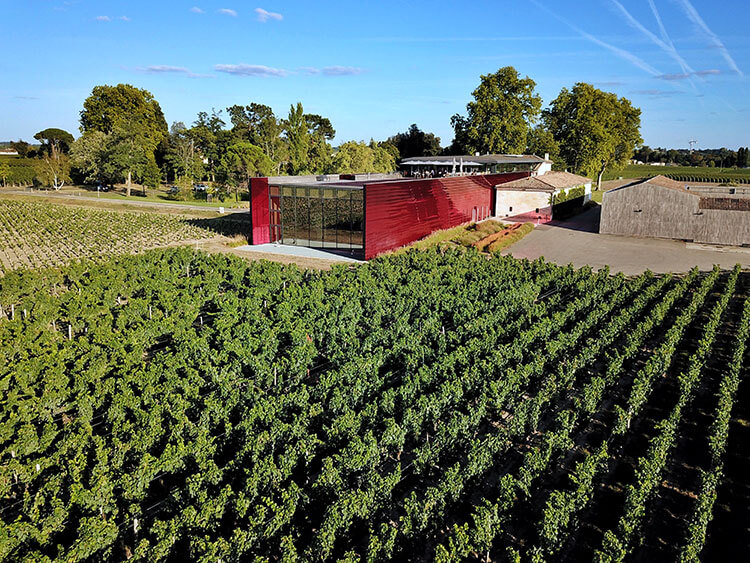
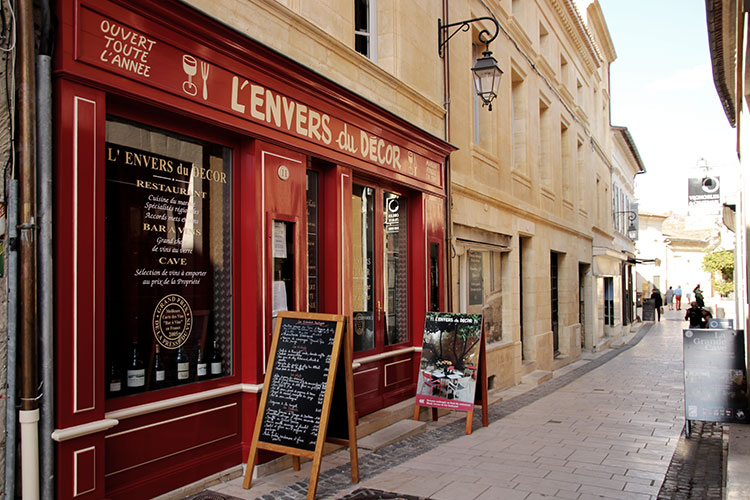
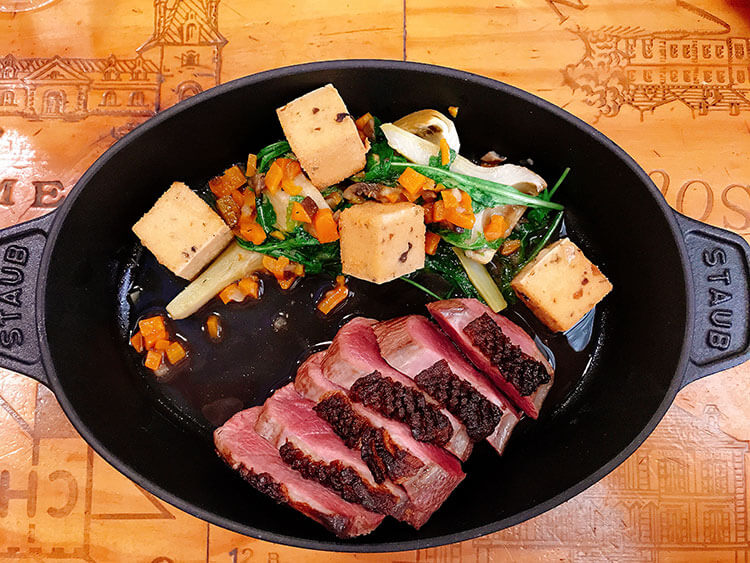
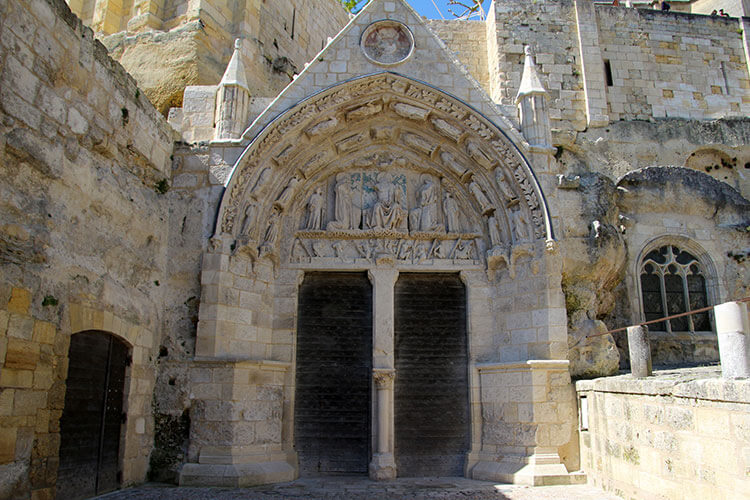
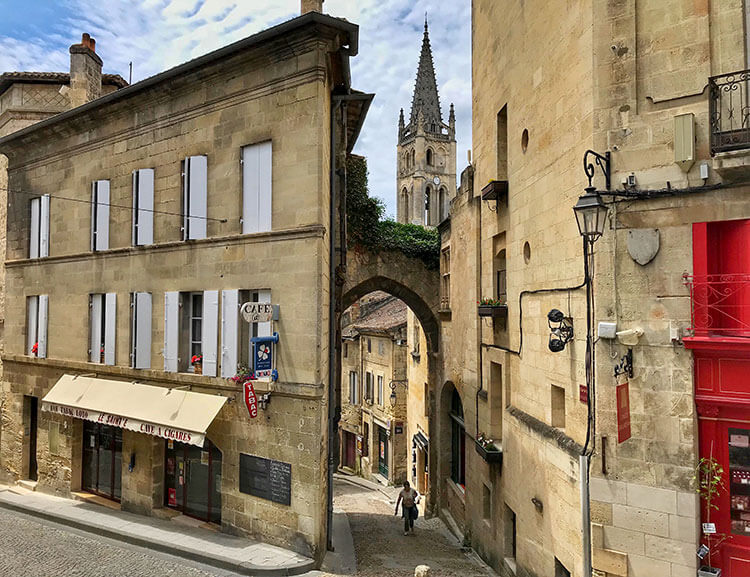
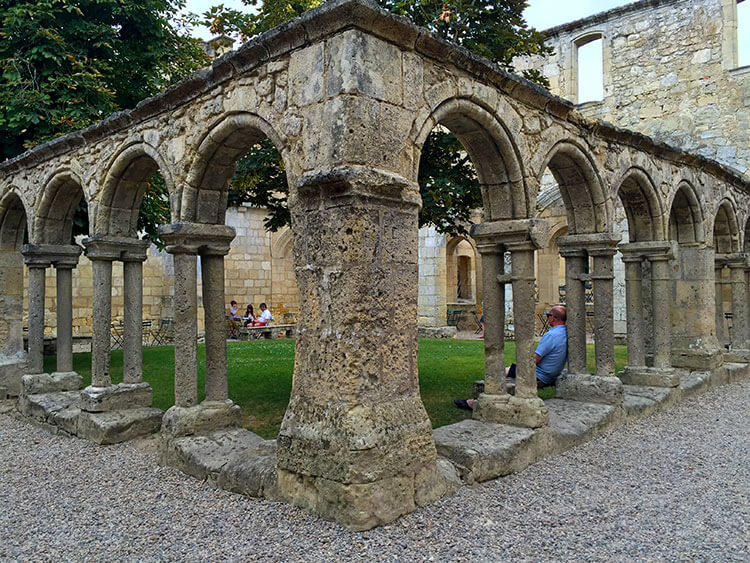
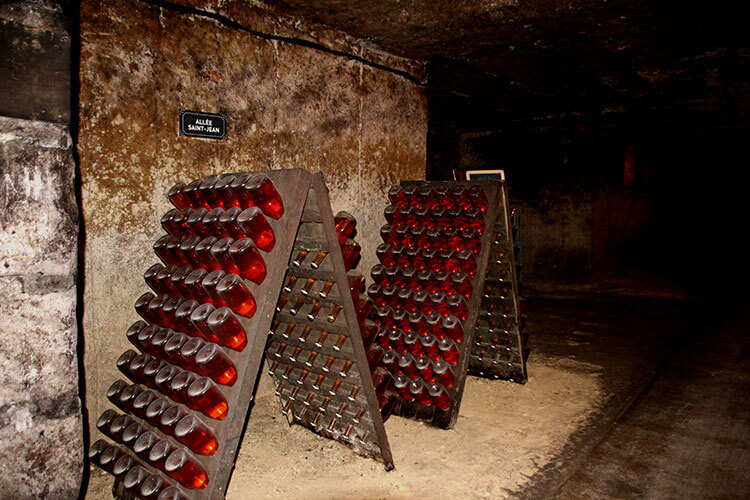
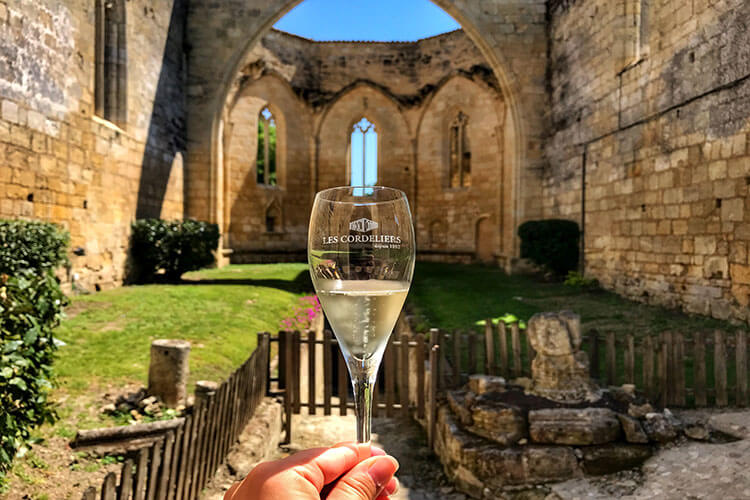

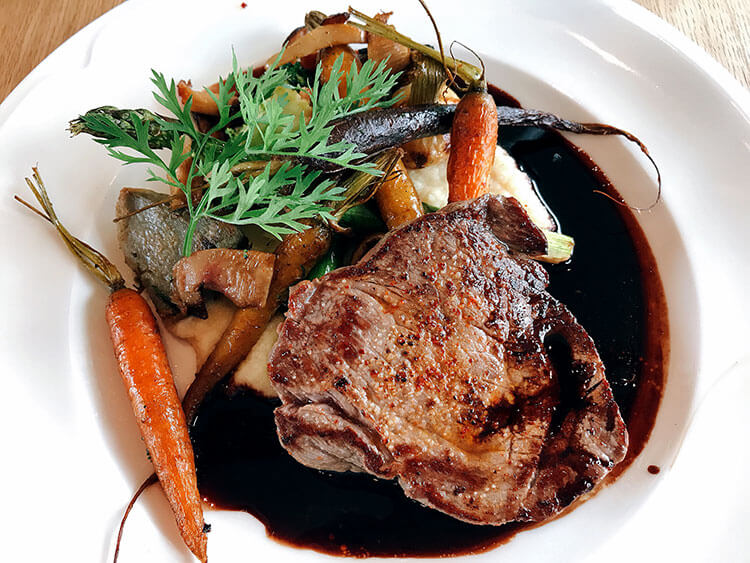
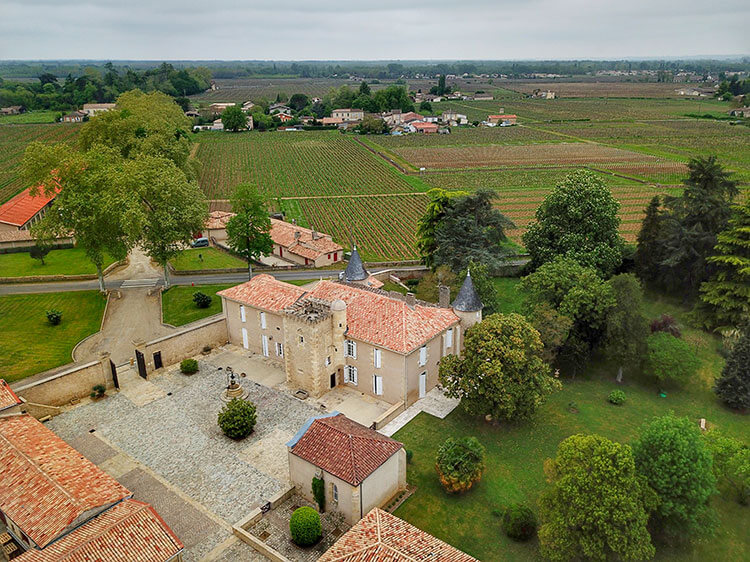
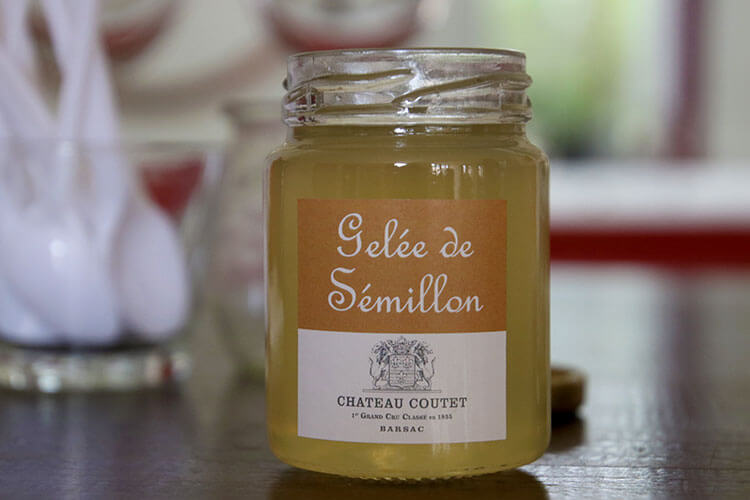
Kate says
Thank you so much for this very informative piece. Myself and hubby are heading next September. We are going to watch the rugby in Bordeaux 9th and 10th. But I’ve booked to stay from Wednesday night until very late on Monday. After reading your to do lists I am even more excited. Thank you once again.
Jennifer Dombrowski says
There will certainly be additional events going on, too, for the Rugby World Cup. What a fun time to visit!
Semiha Weber says
Hello dear Jennifer & Tim! We came to Bourdeaux for the first time. On the way to here, I read your blog post and took notes. Together with the photos and context, you prepared an excellent, simple, and applicable route. I also downloaded guides from Tourism Office, but this blog post was much simpler and took less time to create a route and get informed about the stops in an attention grabbing way. So thanks a lot for such a clear website and language. We appreciate it!